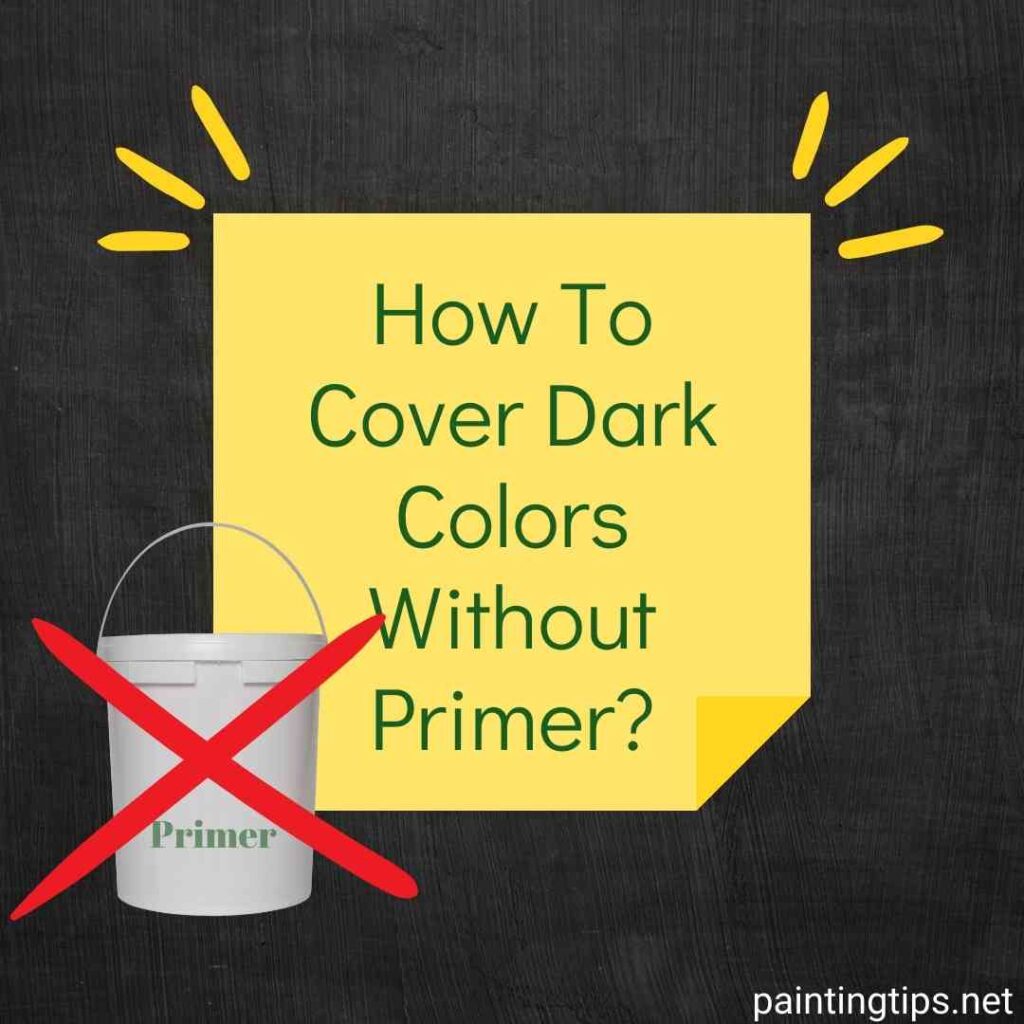Is primer necessary for painting over dark colors, or can it be skipped entirely? In this article, we answer common questions about covering dark colors without primer and explain effective methods for doing so.
Painting over Dark Color without Primer

While using a primer is the most effective way to cover dark colors, it’s not always necessary. If you’re in a hurry, or perhaps you’re looking to save a little time or money, there are still ways to achieve good results without it. In this post, we’ll walk you through the best techniques to successfully cover dark colors without primer and make sure your project turns out great.
The most effective way to cover dark colors is by using a primer. If you have the time during the painting process, we highly recommend applying a primer first. Primer not only makes it easier to cover dark colors but also improves paint adhesion and reduces the amount of paint needed.
Using the right primer is the easiest and most effective approach to covering dark colors. A high-hiding primer designed for this purpose is the best choice, but if that’s not available, a general-purpose primer can also work. So how can you tell if you need a primer?
Do You Need Primer for Dark Paint?
Depending on how dark the paint color is, you may need to use a primer. Primer is required in order to cover dark colors such as black, navy blue, red, dark gray, anthracite, etc. Otherwise, you have to apply too many coats of paint. However, there are also ways to cover dark-colored walls without using primer.
Is a Primer Necessary for Painting?
While a primer isn’t always strictly necessary, it becomes especially important when painting over dark colors. Primers create a smooth and even surface for paint to adhere to, ensuring better coverage and longevity.
If you’re covering dark shades, skipping the primer may lead to additional coats of paint and more time spent on your project. Although high-quality paint and the right techniques can sometimes work without primer, applying one is still necessary for achieving the best results, particularly with dark or vibrant colors.
How to Cover Dark Colors without Using Primer?
The best way to cover a dark-colored paint is to use a primer that matches the type of your paint. This way, your paint will bond well with the primer, and you won’t have any adhesion issues. If you’re determined to skip it, the following methods will help.
1-Do Not Thin The Paint
Many types of paint are sold ready to use, but some paints may require a small amount of thinning. Whether you’re using water-based, latex, or synthetic paints, do not add thinners to your paint. Thinners and water can make the paint easier to apply, but they also reduce its coverage.
2-Allow The Paint Coats to Dry Well
Did you know that you can’t cover dark colors even if you apply five coats of paint every five minutes? A paint’s ability to cover depends on two factors: the quality of the paint and the waiting time between coats.
The recommended waiting time between coats is listed on every paint can. For acrylic, latex, and other water-based paints, it’s typically around 5 hours, while for synthetic paints, it’s about one day. Allowing enough time between coats helps you cover dark colors more effectively, even without using a primer. “Related post: When to apply second coat of paint.”
3-Use a Quality Roller
Quality rollers do not shed their threads, do not leave marks on the wall, and can absorb a lot of paint. The excessive paint absorbed by the roller ensures that the paint layer is thick and helps to cover the dark color. “Related article: How to paint with a roller without streaks?”
4-Choose High-Quality Paints
If you want to cover a dark color without using primer, the secret is working with high-quality paint. Cheap paints will only waste your time, money, and energy by forcing you to use extra coats. Choosing a premium wall paint helps you get the job done faster and better. Otherwise, you might find yourself wishing you had used a primer after all!
Frequently Asked Questions
Can I Paint over Dark Colors without Primer?
Yes, you can paint over dark colors without primer. But you’ll waste a lot of paint. Primers are usually cheaper than paint. Using primer instead of paint, you can easily cover the bottom color and not consume much paint.
Do You Need Primer for Black Paint?
Yes, you should use several coats of primer for black paint. Otherwise, it is difficult to cover the black color. (Black is a difficult color to cover, even with primer.)
Do You Need a Dark Primer for Dark Paint?
No, you don’t need a dark liner to cover a dark color. You can use a white primer or mix some of the paint in your primer.
Can You Paint over The Red Color without Primer?
Painting over red walls without primer is laborious. You need to use a lot of paint. We recommend using a primer to cover the red color.